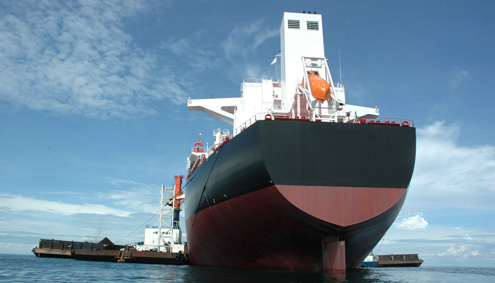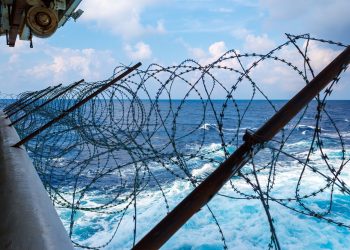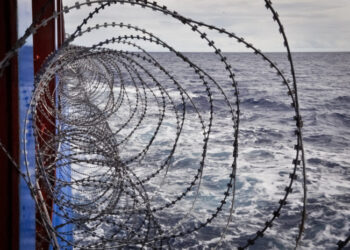The regulator has changed its position by considering extensions to AMS installed vessels that are near the end of the acceptance period, but challenges remain for owners seeking compliance, writes Evon Li, Senior Engineer, Advisory Services, ABS
Another ballast water management deadline is looming; but owners and operators whose installed systems are operating under the US Coast Guard’s Alternate Management System (AMS) may be able to secure extensions of 12 months or more if they present evidence that the vendor has commenced testing for Coast Guard Type Approval, submitted USCG TA application and is pending approval or requires additional time to complete the upgrade to the USCG TA configurations.
All vessels that plan to trade or operate in US waters are required to meet Coast Guard’s Ballast Water Discharge Standard (BWDS), by using one of the following compliance options:
- Installing and operating a Coast Guard Type Approved BWMS;
- Use only water from a US public water system;
- Discharging ballast water to an onshore facility or another vessel for the purpose of treatment;
- Do not discharge; or
- Use of an Alternate Management System (AMS) limited for five years from the vessel USCG BWDS compliance date (33 CFR Part 151, subparts C and D date), provided that no USCG approved system is suitable for the vessel when the AMS is installed.
The AMS program was introduced in the Coast Guard final rule as a bridging strategy before the availability of Type Approved systems, to allow BWMS Type Approved by an IMO Administration to be installed and operated on vessels for a maximum of five years after the USCG BWDS compliance date.
The main intent of this program was to allow BWMS vendors and manufacturers to have enough time to obtain USCG Type Approval without penalizing vessel owners for having been early adopters.
At the end of the acceptance period, if the installed AMS does not receive USCG approval, the vessel would have to install a USCG Type Approved BWMS or use another approved BWM compliant method, otherwise, the ship would not be allowed to discharge ballast water to US waters.
This is most important for mid-life and older vessels that face economic challenges based on their remaining service lives. An owner or operator’s options are limited to, at minimum, either completing a retrofit with a compliant BWMS, avoiding trading in US waters, or scrapping the vessel.
There are several AMS accepted systems that are unlikely to achieve Type Approval, creating additional problems for owners of these systems if they intend to continue to trade in US waters.
In NVIC 01-18, the Coast Guard had previously indicated that no extensions would be granted to a vessel with an installed AMS or with plans to install one onboard. Considering pressure on shipowners, including possible financial and operational consequences brought about by replacing or removing the AMS-accepted BWMS if it did not receive USCG Type approval at the end of the acceptance period, the USCG published MSIB 14-20 in April this year as the mechanism for applying for AMS program extensions.
The MSIB 14-20 bulletin,‘COVID-19: Ballast Water Management (BWM) Extensions’ indicated Coast Guard’s willingness to adjust its extension policy to help shipowners and operators whose planned BWMS installation and commissioning are impacted due to the COVID-19 pandemic. It also covers the need to apply for extension for those who have AMS-approved systems still waiting for Type Approval or where the vendor may need more time to complete the upgrade process to the USCG Type Approved configuration.
Shipowners and operators with installed AMS should start evaluating their AMS acceptance timelines to consider if an AMS extension would be necessary, particularly for those vessels close to the end of the acceptance periods. An extension to continue operating the AMS system beyond the regulatory maximum, depends on if the AMS installed BWMS:
- is in the midst of completing USCG TA testing, or;
- has been submitted and waiting for the AMS installed BWMS to be USCG Type approved, or;
- vendors/manufacturers require more time to complete the upgrade from the AMS configuration to the USCG TA configuration.
For AMS-installed vessels with AMS acceptance period ending within the time frame of 1st April 2020 to 1st April 2021, that were unable to complete the conversion to USCG Type approved configuration due to the impact COVID-19 pandemic, USCG is willing to extend the compliance date for up to 12 months upon request. While there is no need to provide any supporting documentation for vessels in this category, the vessel owner or operator will need to identify the vessels in order for the Coast Guard to adjust the relevant documentation.
Coast Guard stresses that the granting of the COVID-19 extension, is not an interim extension and additional time to accommodate operational or regulatory schedules should not be expected. For ships that undergo a drydock but cannot complete installation of a BWMS, owners and operators are encouraged to complete as much work as possible during the drydock to avoid the need for a further dry-dockings.
This may still be problematic because of the backlog of work at shipyards due to the COVID-19 pandemic. The difficulties of gaining access to the vessel, securing the required equipment and spares and working safely in such confined spaces means that some installations have been started but not completed.
For vessels that are seeking an AMS extension beyond 12 months, substantial documentation or evidence showing details and third-party verification justifying the need for a longer extension period to bring the vessel into compliance would need to be provided.
If the vessel has an BWMS Type Approved by an IMO Administration installed that is AMS accepted, Coast Guard Type Approval may still be a difficult process due to the limited number of certified labs for testing. ABS understands that extensions might need to be granted into 2022, 2023 (or later), since vendors still have catch up with the time lost since the pandemic began.
Some systems are relatively easy to upgrade with most changes to the computer-based control systems. But some AMS accepted BWMS require the replacement of significant components and some require replacement of the entire BWMS.
The BWMS should be maintained in the AMS Accepted configuration (i.e., Bill of Materials, software, and instructions, etc.) until it can be upgraded all-at-once to the USCG configuration at the vessels next out of service period. The replacement of any component (piece, part, control software, etc.) would result in the invalidation of the Administration Type Approval Certificate and AMS acceptance. The system would be uncertified for use in International or US waters.
Clearly, it might not be possible to complete some of this work with the vessel in service since it will be unable to either treat or discharge ballast water anywhere. Upgrades can be conducted during Intermediate Hull Surveys or drydocking, but the system would not be authorized for use until re-certified (i.e., additional surveys in accordance regulation E-1 of the BWM Convention).
From the vendor’s perspective, particularly those having completed Coast Guard Type Approval testing, submitted an application pending approval, the approval timeline is unknown (Coast Guard to complete reviews and issue an approval for the system).
Upon notification that the system has been Type Approved by the USCG, the vendor might not be capable of completing all the demands for upgrade kits such as parts, software and service technicians to convert all the AMS installed vessels to Type Approved configurations for their clients.
Coast Guard has indicated that the AMS extensions could be granted for the minimum time required – approximately 12 months – to allow the system to be approved and for the vendors to attend the vessels to conduct upgrades. However, on a case by case basis, an AMS extension beyond a 12 months period is possible with the submission of substantial documentation to the USCG justifying the need for a longer extension period to bring the vessel into compliance.
The views expressed in this article are solely those of the author and do not necessarily represent those of SAFETY4SEA and are for information sharing and discussion purposes only.
 Evon Li is Senior Engineer of Advisory Services at ABS
Evon Li is Senior Engineer of Advisory Services at ABS





























































